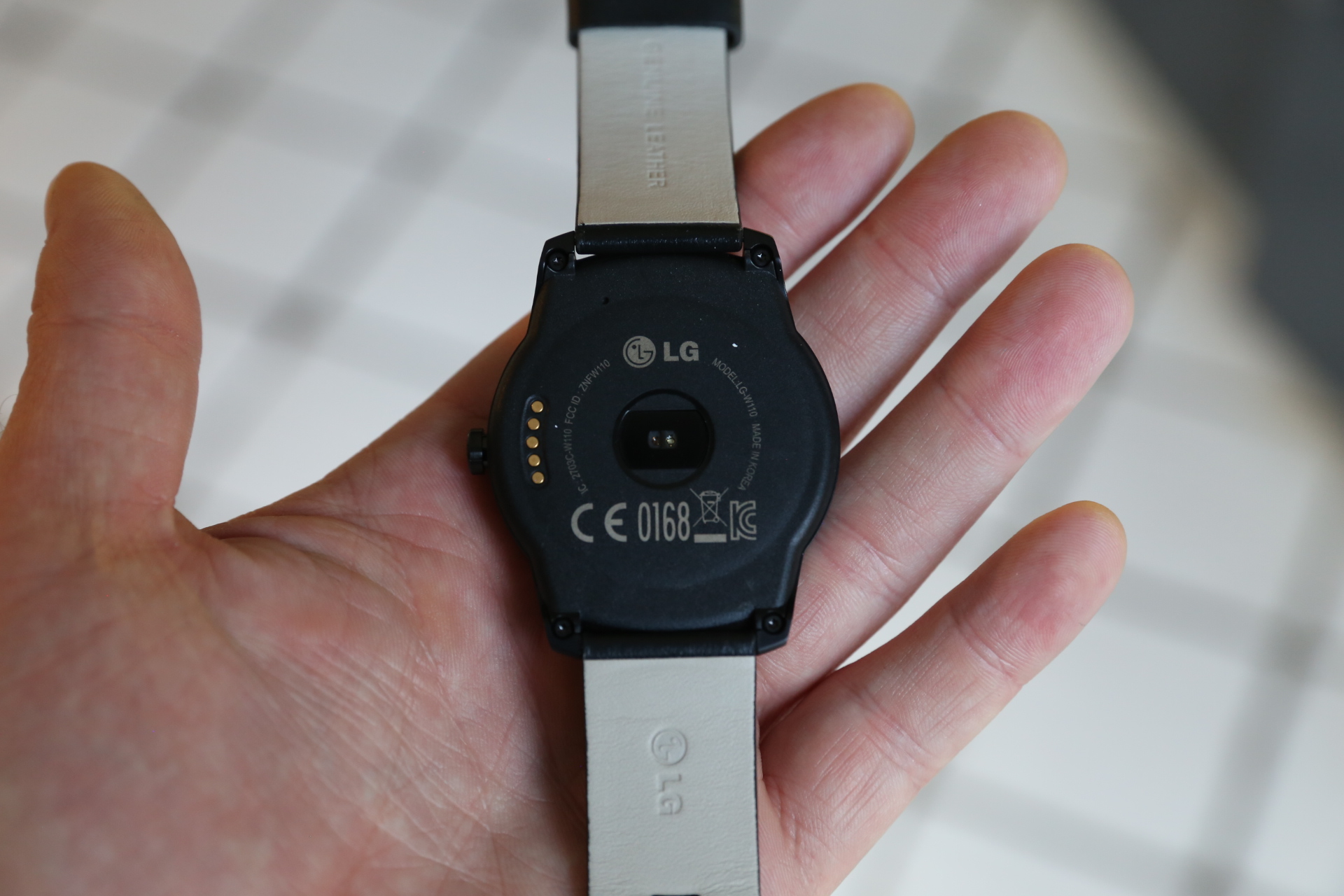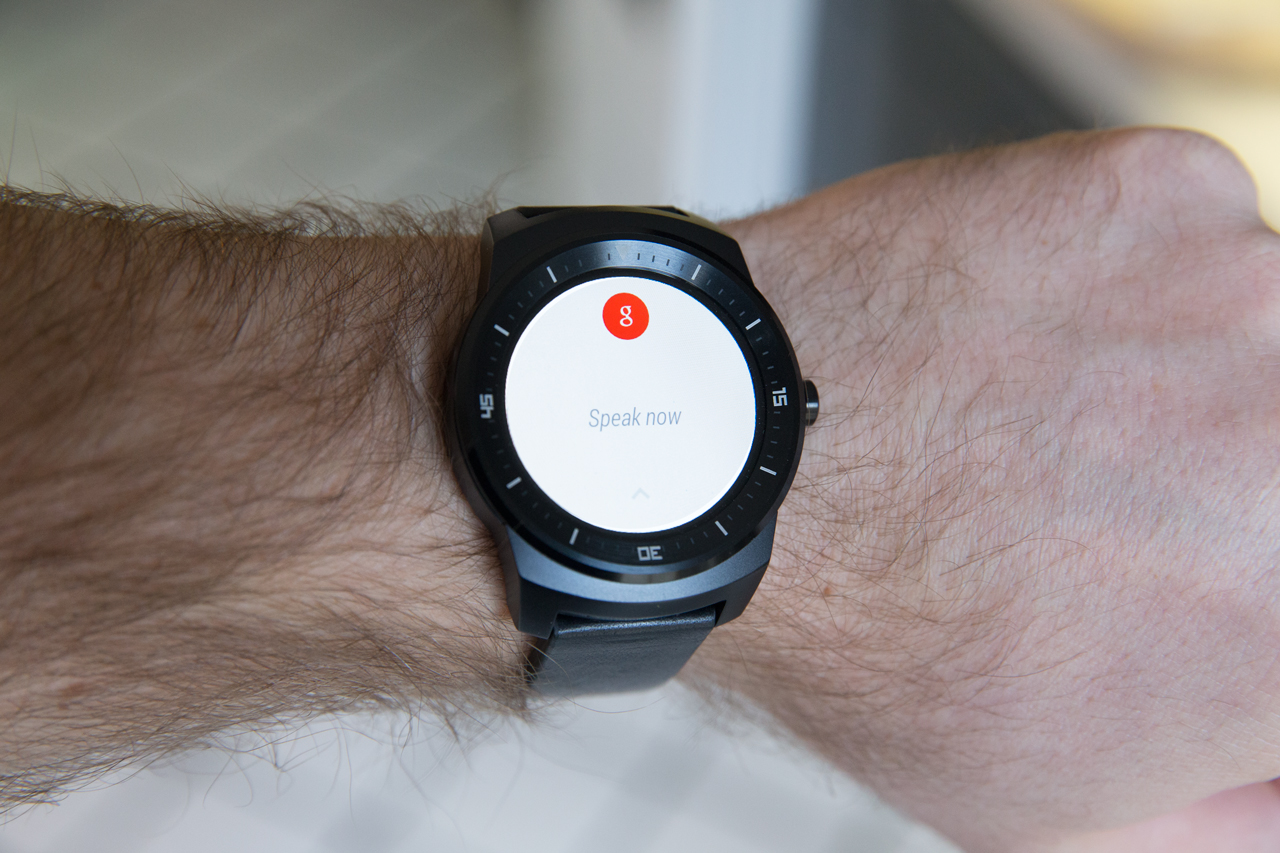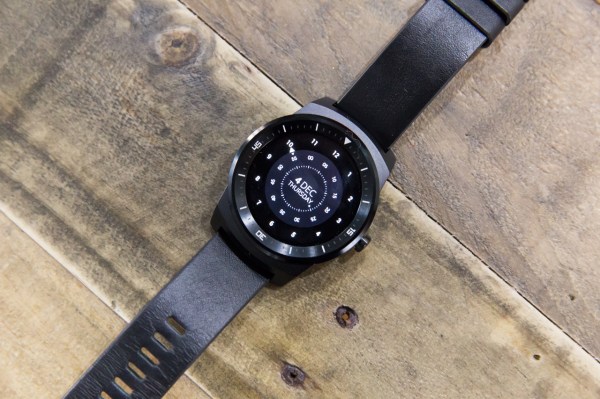The G Watch R is LG’s second Android Wear smartwatch, which is impressive given that the platform has only been available to the general public for about half a year, and other big Android OEMs haven’t yet shipped a first device. The original G Watch felt very much like the wearable hardware equivalent of a “FIRST” Internet comment, however, delivering little in the way of lasting appeal or noteworthy aspects. The G Watch R, on the other hand, helps redefine what makes a great Android Wear watch.
Basics
- 1.3-inch circular OLED display
- 46.4 x 53.6 mm case
- Qualcomm Snapdragon 400 1.2GHz processor
- 4GB storage, 512MB RAM
- IP67 water/dust resistance
- MSRP: $299.99
- Product info page
Pros
- Full circle display is gorgeous
- Durable construction
Cons
- Expensive
- Big
Design
The G Watch R boasts a design that is at once both the best in the Android Wear market, and also something that will leave a lot of consumers cold. That’s because it’s big – chunky big, with a face and bezel that occupy a very considerable amount of wrist real estate. It’s not unlike a Casio G-Shock, however, and for that reason it will appeal to fans of chunky watch designs, as well as those who like oversize divers, but for the slim-wristed and those with more understated tastes, it’s going to be a no-go.
[gallery ids="1090609,1090610,1090611,1090612,1090614"]
I’m still a big fan of the G Watch R’s design, stationary bezel aside, for the simple reason that it takes a stance. I feel like most Android Wear devices, the original G Watch included, try their best to appeal more broadly, and in doing so manage only to become forgettable or boring. The G Watch R’s big bezel is in part a technical necessity to let it achieve a perfectly circular display while including the necessary ambient light sensors, but it’s also a statement, and that’s worthy of respect.
The G Watch R is also among the most admired Android Wear devices I’ve tested, which include just about every single one launched to date. It ranks with the Moto 360 in terms of how many comments I’ve received about it from friends and strangers. A lot of the admiration is still of the “That looks good on you, but I don’t know about it for me” variety, owing again to the size, but it’s still turning heads, which I think is crucial in this market for sustained success.
And that display. A perfect circle makes a surprising difference, and with watch faces designed for the G Watch R’s round screen, no other Android Wear device can compare – including the Moto 360, with its black cutout at the 6 o’clock point on the device. That said, Android Wear still feels a bit kludgy running on circular screens, as if Google still hasn’t quite figured out the best way to display Wear notification cards on a round display.
Features
LG’s G Watch R boasts the usual suite of sensors, but it also has an optical heart rate monitor, something the original G Watch lacked. One thing it’s missing that Android Wear supports is GPS, however, which is something that most OEMs have left out of their sensor package so far. Including it would’ve made the G Watch R much more useful for navigation without a connected phone, and it’s a more obvious omission when you consider that the G Watch R is the most expensive Android Wear device available.
The price is steep, but other elements of the G Watch R help account of that. The 410mAH battery helps it last for around two full days in my testing (light to moderate use), which is more than can be said for most of the competition. The stainless steel case feels rugged and able to withstand bumps and drops, and the leather band (while stiff and somewhat cheap feeling) is durable.

The G Watch R has other handy perks, including a physical button in the form of a crown (the G Watch had no button), and compatibility with any 22mm standard watch strap your heart should desire. That sensor for heart rate activity is a nice-to-have feature, especially now that Android Fit is available, and the blacks from the OLED display are bottomless.
Performance
As mentioned, the G Watch R gets around two days of use on a single charge, which in a world of Android Wear watches that can often limp to even just the end of a single day, feels like a wealth of charge time. It has a magnetic dock like the G Watch for charging, and while a standard micro-USB input somewhere would’ve been better for long-term value, the dock works well enough and sits nicely on a bedside table.
The system software itself runs butter smooth on the G Watch R, which is to be expected given that it has internal specs on par with some mid-range Android smartphones. The OLED screen is viewable in all lighting conditions, and even in inactive modes it provides good visibility prior to waking.

And while the watch is large, it wears its weight well and doesn’t come across as overly heavy on the wrist. In fact, it’s one of my favorite Android Wear devices in terms of comfort, but I’ll qualify that by acknowledging that I’m a regular wristwatch wearer, and like a sense of weight on my wrist in general.
The optical sensor on the G Watch R seemed to be one of the better ones I’ve tested, and more reliable when it came to providing a result without encountering any errors.
Bottom Line
The LG G Watch R is the best designed Android Wear device currently available in my opinion. LG has done a great job of prioritizing design, with a take that isn’t milquetoast and takes some risks. That said, it’s not for everyone – Android Wear on circular displays is still a bit awkward, and this is a big piece of hardware for a wearable. Plus, at $299 it’s as expensive as some decent smartphones. But if you’ve got an itch that only a smartwatch will scratch, the G Watch R is indeed a class act.
